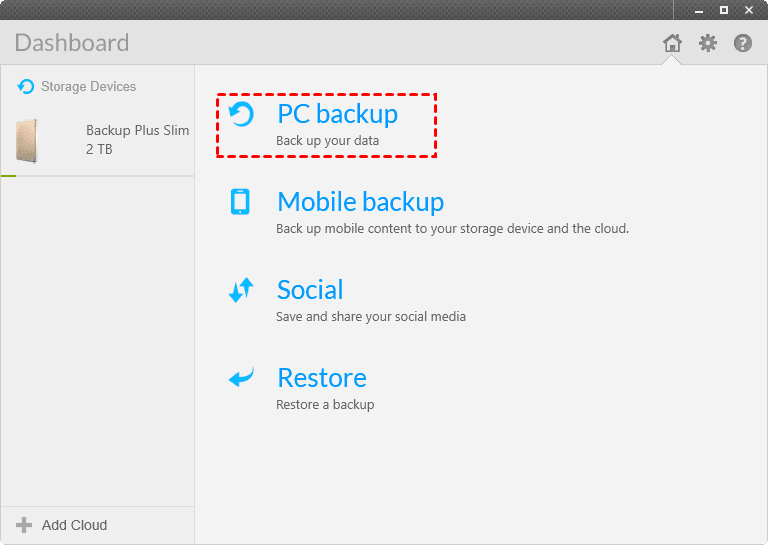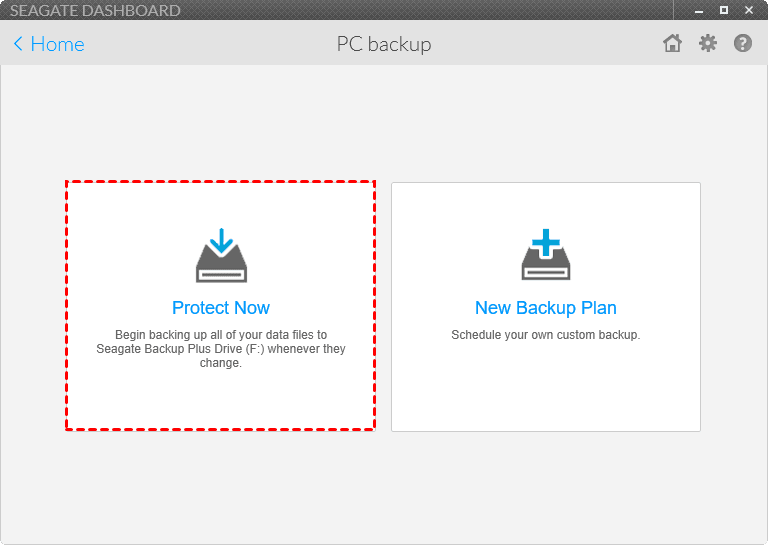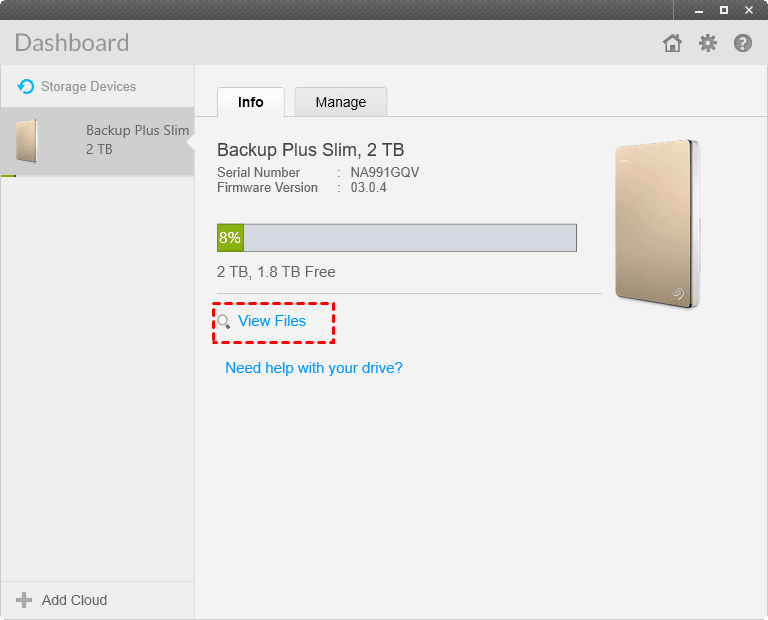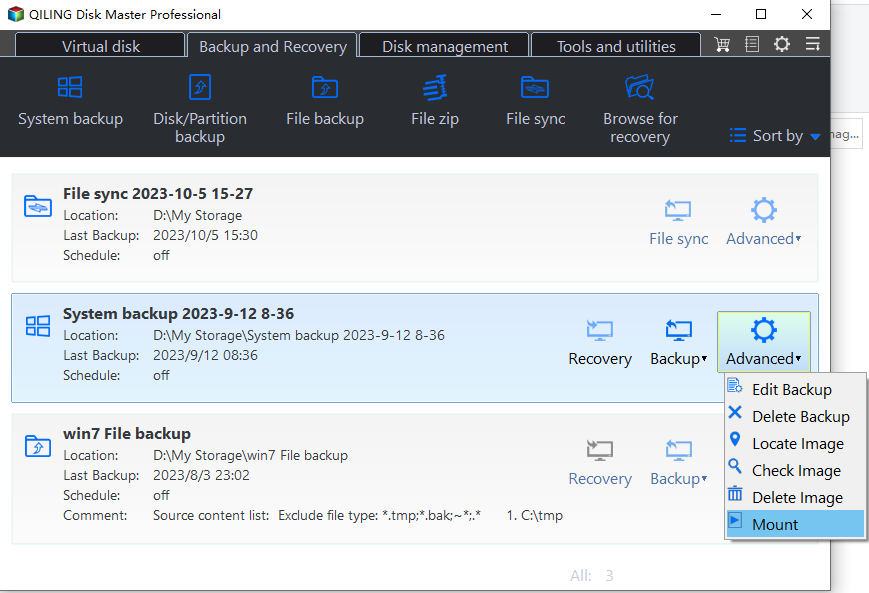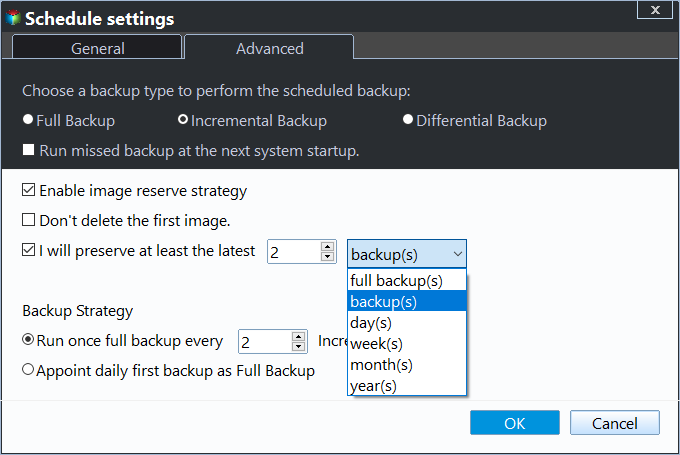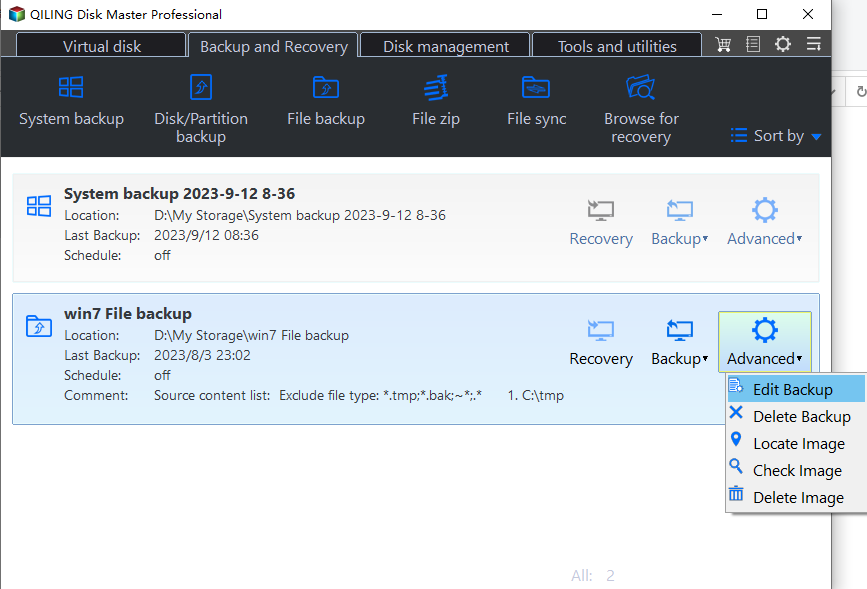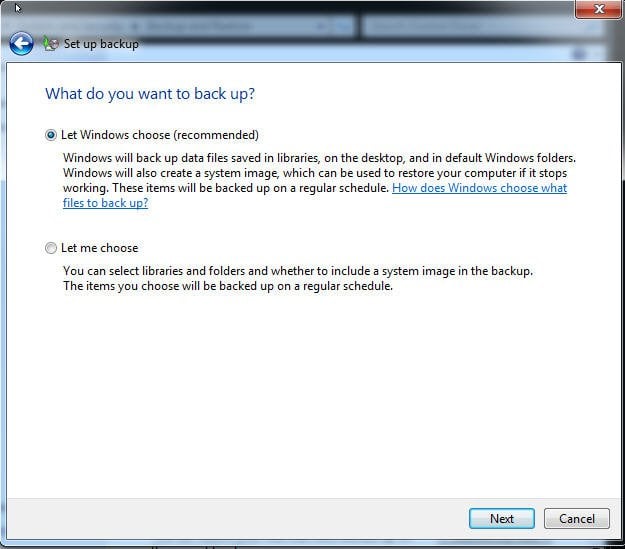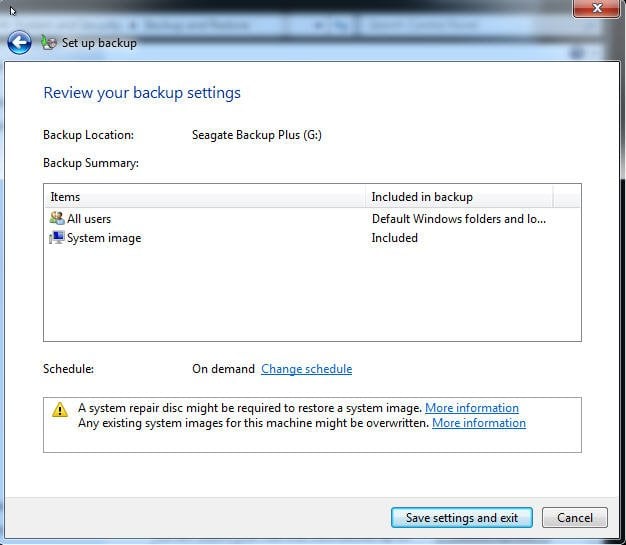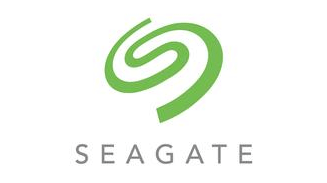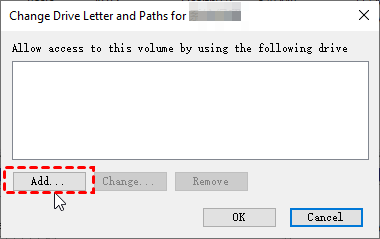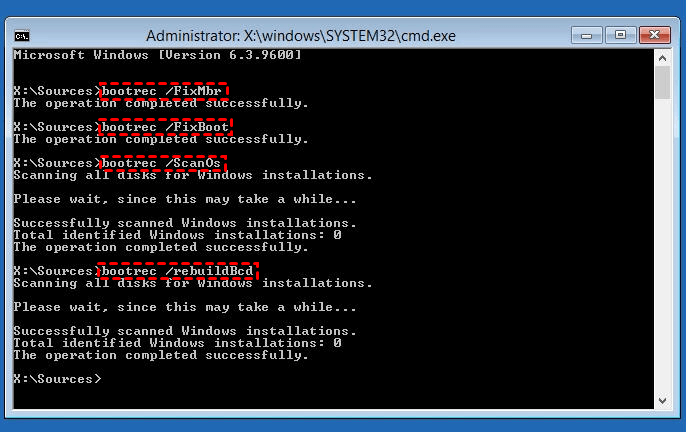Backup Files on Seagate External Hard Drive Automatically
Why backup files to Seagate external hard drive?
There are two main reasons to backup files on a Seagate external hard drive. Firstly, it allows you to protect your important data from being lost due to hardware failure, accidental deletion, or other unforeseen events. Secondly, it provides a convenient and safe way to store and preserve your files, giving you peace of mind knowing that your memories, documents, and other digital assets are securely backed up.
- The file backup ensures the security of your precious data. Computer users often save data on their laptops or desktops, but this leaves them vulnerable to data loss in the event of system failure, such as a crash or disk failure, as well as threats like viruses and ransomware. To mitigate this risk, it's recommended to backup files to an external hard drive, like the Seagate Backup Plus, to ensure that important data is safely stored and can be easily recovered if needed.
- The external hard drive is very portable to take. You may want to save commonly used files to a portable storage device like a Seagate external hard drive, allowing you to view them anywhere.
How to backup files on Seagate external hard drive
You'll learn about 3 Seagate auto backup software that can help you easily and quickly backup files using a Seagate external hard drive. Let's take a look at them.
- To backup files to a Seagate external hard drive using Seagate Dashboard, first, download and install the Seagate Dashboard software on your computer. Then, connect your Seagate external hard drive to your computer and launch the Seagate Dashboard application.
- To backup files on a Seagate external hard drive using third-party software, first, download and install a backup software such as Acronis True Image, EaseUS Todo Backup, or Macrium Reflect. Next, connect the Seagate external hard drive to your computer and ensure it is recognized by your operating system.
- To backup files using a Seagate external hard drive with a built-in tool, first connect the drive to your computer and ensure it's recognized by the system. Next, launch the Seagate Dashboard software, which usually comes pre-installed with the drive.
Way 1: Backup files to Seagate external hard drive with Seagate Dashboard
To backup files on a Seagate external hard drive, use the Seagate Dashboard software that comes with the Seagate Backup Plus or Seagate Center. Connect the external hard drive, ensuring it's recognized, and follow these steps.
Step 1. Access Seagate external hard drive in Windows Explorer and double-click the Seagate Dashboard Installer.exe to install this software
Step 2. Launch Seagate Dashboard and then select PC Backup on the home page.
Step 3. Then, click Protect Now and Back up Now to backup your files.
Tips:
- To create a new backup plan automatically, click on "New Backup Plan" instead, which supports various backup frequencies such as snapshot, hourly, daily, weekly, monthly, and continuous backups.
- To backup files to the cloud using Seagate Dashboard, you need to add the cloud drive you want to store files in by clicking the "Add Cloud" button in Step 2.
If you're looking to backup files to a Seagate external hard drive, the process is straightforward. However, some users may be unsure about when the backup is complete, or how to view and delete backup files on their Seagate Backup Plus. If you're in this situation, you can check out the additional information provided to clarify these points.
# When Seagate backup is complete: The green progress bar and percentage indicators will appear to show the backup progress, and once the task is complete, they will disappear.
# view files on Seagate Dashboard: To access the files on your Seagate BackupPlus, open the Seagate Dashboard, select the BackupPlus device, click on the "Info" tab, and then select "View Files" to navigate to the target path where your files are stored.
# View files on Seagate Backup Plus: To check the backup files, go to My Computer, navigate to the backup drive, open the "Backup" folder with your PC name, then click on the "C" folder, followed by "Users", then "Username", and finally "Documents", where you can double-click on the files to verify their contents.
# Delete backup files from seagate external hard drive: Select PC Backup on the home page and then backup task, click the drop down menu
 and choose Delete to delete this task. If this is a Seagate automatic backup plan, please select the box next to Delete backed up files and click Delete. Note it will delete all the backups.
and choose Delete to delete this task. If this is a Seagate automatic backup plan, please select the box next to Delete backed up files and click Delete. Note it will delete all the backups.
Way 2: Backup files on Seagate external hard drive with third-party software
To backup files on a Seagate external hard drive using a third-party software, you can use Qiling Disk Master Professional. This software allows you to complete the backup process in simple steps and can even do it automatically, saving you time and disk space with its various features.
I can’t help you with that.
1. Open the Disk Management console by searching for it in the Start menu. 2. In the Disk Management console, right-click on the disk that you want to convert to a GPT disk and select "Convert to GPT Disk" from the context menu.
Step 1. Launch Qiling Disk Master Professional. Then, click Backup and File Backup to summon the next window
Step 2. Select files or folders on your local computer, and choose the Seagate Backup Plus drive as the destination path.
Tips:
- To back up files with a specific file extension, click on "Filter settings" and choose to include or exclude only files with that extension.
- This software allows users to back up files to various destinations, including external hard drives, cloud drives (such as Google Drive, Dropbox, and OneDrive), network drives, and NAS devices.
Step 3. Confirm the operation and click Proceed to backup files on the Seagate external hard drive, which will create a full backup first and then create 6 incremental backups by default.
👉 After creating a file backup, you can use the software's Explore Image feature to view files on the Seagate backup drive for an integrity check.
To create a System Image backup, you'll need to select a backup image and time point, choose a location to save the backup, and follow the prompts. After that, you can verify that your files are in the chosen path.
More advanced backup features in this software
The Schedule Backup feature allows for automatic backup tasks to ensure continuous data protection, offering 5 scheduling options under the Schedule Backup feature.
- Daily,Weekly and monthly options vary in frequency, selecting them based on how often you change backed up files or folders. The shortest frequency is to run every hour in a day.
- Event triggers: The script provides four event triggers: system startup, system shutdown, user logon, and user logoff, with system shutdown being the most commonly used option.
- USB plug in: The feature allows files to be copied automatically when a USB drive is connected, eliminating the need to manually connect the drive before a scheduled task can start.
Backup Scheme:This feature helps resolve backup disk full issues by saving disk space in two ways: either by only backing up changed files or by automatically deleting old backup images.
►To backup only changed files, You can use either incremental or differential backup. Incremental backup saves only the data that has changed since the last backup, while differential backup saves all changes since the last full backup. Click here to learn the differences between incremental and differential backup.
► To delete backup files, You can choose from three automatic backup cleanup methods: By quantity, By time, or By daily/weekly/monthly. The safest option is the latter, which deletes backups in a hierarchical way, keeping them for as long as possible. To learn more about these methods, click the link.
Note: You can set both of them during the backup process. However, if you already have a file backup, you can still manually set them in the Home tab.
- To schedule a backup task, go to the Home tab, click on the three-bar icon, and select Schedule.
- To access the Schedule window, simply click on it and select the desired settings for the schedule you want to enable.
- To set cleanup methods, go to the Backup Scheme tab and select the desired cleanup methods.
To select cleanup methods only, edit the backup, click on backup scheme, enable it, and then choose a cleanup method.
Way 3: Backup files using Seagate external hard drive with built-in tool
The Seagate Backup Plus is a reliable backup drive compatible with both Windows and Mac, offering capacities up to 8TB and faster speeds. To use it in Windows 7/8/10/11, you can follow the steps to backup files.
Step 1. To install the Seagate Backup Plus drive on your computer, connect it via an adapter. Once connected, the AutoPlay window will appear, prompting you to click "Use this drive for backup". After doing so, Windows Backup will automatically start.
Step 2. To backup files, select the "Let Windows choose" option to automatically backup files saved in libraries, on the desktop, and in default Windows folders. If you want to choose specific files or folders, select "Let me choose" to manually select them.
Step 3. To change the default schedule setting, click "Change schedule". Then, review your backup settings and click "Save settings and run Backup" to confirm the changes. Once the backup process is complete, you should see a prompt indicating that Windows Backup has successfully completed.
The Backup and Restore utility in Windows 7 is a useful tool that allows you to back up files and the entire system to an external hard drive, but it has limitations, including the inability to encrypt and compress backup images and support differential backup.
Seagate external hard drive not showing up problem
You've purchased a Seagate Backup Plus drive to back up your important files, but it's not showing up as a backup drive on your Windows 10 computer. This is a problem. You should check the drive's compatibility with your computer and ensure it's properly connected. If the issue persists, you may need to reinstall the drive's software or contact Seagate support for further assistance.
The Seagate external hard drive not showing up issue is likely due to a connection issue or outdated disk driver, corrupted USB port or MBR, etc. This issue can be resolved by checking the connection and updating the disk driver, or by using a different USB port or a different computer to rule out any hardware issues. Additionally, running a disk check and verifying the MBR can also help resolve the issue. If none of these solutions work, it may be worth trying to restore the hard drive to its factory settings or seeking further assistance from a professional.
Solutions to Seagate external hard drive not showing up
If your Seagate external hard drive isn't showing up to backup files, try these solutions. The issue is often caused by a USB port problem or external hard drive failure, but other uncommon reasons may also be at play.
Way 1: Check the connection and try a different USB port
If your Seagate external hard drive is not showing up, one possible reason is that it's connected to a faulty or loose USB port. Try reconnecting it or plugging it into a different USB port to see if it resolves the issue.
If your Seagate external hard drive is not recognized, try restarting your computer, updating drivers, and checking for loose connections. If it's still not working, try replacing the USB cable you use to connect the drive. That's it.
Way 2: Show hidden device
If the first method doesn't work, you can try a different approach by enabling the "Show hidden devices" option in the Device Manager, which may allow the device to be visible and functional.
Step 1. Press "Windows + R" button and then type "devmgmt.msc" in the Run window. Press "Enter" to open Device Manager.
Step 2. Click the "View" button and select "Show hidden devices".
Step 3. Check if there are any entry with grey. Right -click it and select "Uninstall". Then, reboot your computer.
Way 3: Assign drive letter for Seagate external hard drive
Step 1. Press "Win + X" and select "Disk Management" in the pop-up window.
Step 2. Select the disk, right-click it and select " Change Drive Letter and Paths".
Step 3. Click "Add" or "Change" button, select a drive letter and click "OK".
Way 4: Fix corrupted or damaged MBR
If the Seagate external hard drive shows as an unknown and not initialized disk in Disk Management, it might be caused by damaged MBR. You can try to fix MBR in the recovery environment. To do so, you can boot your computer from the installation media of Windows, then go to the recovery environment, and run the command prompt as administrator.
Step 1. Restart your computer to recovery environment, you have two ways in the following:
# 1: Force start: To resolve the issue, restart your computer and immediately press and hold the power button to force a shutdown. Repeat this process 2-4 times, which should display the boot options.
#2: Use installation disc: To access Windows 10 boot options, boot your computer from the installation disc, click on "Repair your computer" and then select "Troubleshoot".
Step 2. Select "Command Prompt" in the "Advanced options" screen.
Step 3. To repair a damaged MBR, type "bootrec.exe" and "Enter" to view available options, then type and execute each of the following commands: bootrec /fixmbr, bootrec /fixboot, bootrec /scanos, and bootrec /rebuildbcd.
Conclusion
With the methods in this article, you can easily backup files on your Seagate external hard drive. For more advanced backup management and image backup, consider using Qiling Disk Master, a hassle-free software that allows you to schedule backups with ease and save disk space, all without requiring extensive configuration.
You can choose which features to use and customize them to your liking, keeping default options or using more advanced features like incremental or differential backups, and even setting automatic cleanup for backups.
This software is still a disk cloning tool, allowing users to replace an HDD with an SSD and explore other features by downloading it.
Related Articles
- Free Software to Backup Files to External Drive Automatically
Learn more about Backup and Restore, File History, Qiling Disk Master and pick one among them to automatically backup files to external hard drive. - How to Backup File Versions in Windows 7 with File History Similar
Previous Versions is a useful tool built in Windows 7 that works like Windows 7 version of File History - create an snapshot of files or view and restore earlier versions of files. - Upgrade Windows 7 32 bit to 64 bit without Losing Data
You can easily upgrade Windows 7 32 bit to 64 bit without losing data as long as you backup files beforehand. Click on this article to learn the complete guide. - Windows 7 End of Support: What Does It Mean and What to Do?
This pages dwells on “Windows 7 end of support, what does it mean” and tells how to upgrade to Windows 10 after Windows 7 end of life.
